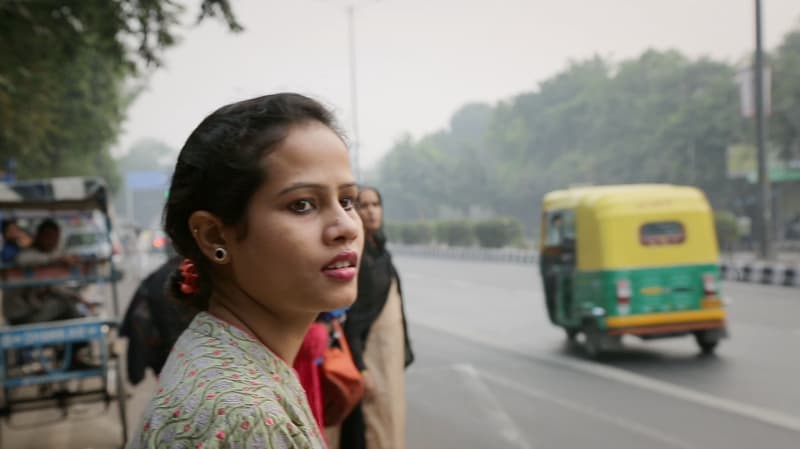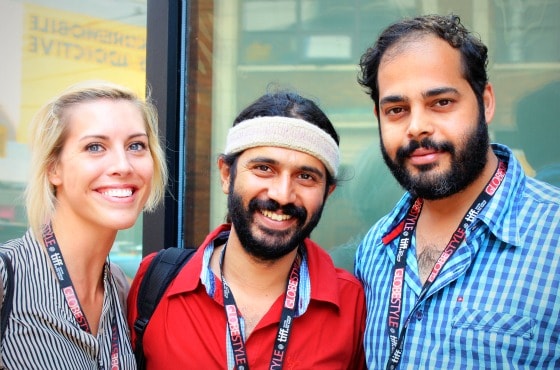Deepa Mehta’s film Anatomy of Violence looks at the making of a rapist
This film is not about an inconvenient truth, it’s about a harrowing truth. Inspired by the Delhi Gang Rape of December 16, 2012, director Deepa Mehta veers wildly from the sensational and the conventional to present a raw film that uncovers universal truths. This horrific incident made worldwide news and provoked unprecedented outrage in India — forcing the country to examine attitudes towards women and change the laws. It stirred up issues and concerns around women’s safety in India and planted fear among many travellers and would-be travellers to India. I have written about these issues extensively on this blog and elsewhere. I saw Anatomy of Violence at a Press and Industry screening at the Toronto International Film Festival. For more background on the film and an interview with Deepa Mehta read The Globe and Mail article.
Unflinching. The word unflinching was created for Anatomy of Violence. It’s a shockingly unflinching deep dive into the everyday world of the poorer class in Delhi. The men portrayed in the film, based on the men who perpetrated one of the most horrific acts in modern memory, live among the middle and upper classes in India’s capital like weeds in a garden.
They grow up twisted from lack of education, nutrition, opportunity and community. Most of them are poor migrants who leave their villages for a so-called better life in the city. They cram into tiny homes, families of three, four and more in a room the size of a walk-in closet. And they scramble to make a few rupees here, a few there, making very little distinction between what’s ethical and legal and what isn’t. They don’t have the luxury of these finer distinctions.
Deepa Mehta makes us look inequity straight in the face. And it’s not pretty. All of those people who have told me, over the years, they would never go to India because they don’t want to face the poverty: this movie’s for you. But it’s not what you think. We’re not talking about pitiful, writhing, saintly, martyrs struggling to keep their families together. We’re talking about unlikable characters, driven by craven egos, and almost no moral compasses. There’s not a jot of romance in this film.
Years ago, I asked a spiritual teacher in India why people journey to India in search of spiritual truth; why is India considered the ultimate destination for “seekers” of truth. He said to me that it’s because India is a land of extremes. The extremes of spiritual light and human degradation exist cheek-by-jowl in India.
Some books and films celebrate the light that you can find in India. This film lifts the rock and exposes the dark. And it’s shocking. It’s shocking for several reasons, and they might not be what you expect.
While wanting to gain whatever insight the film had to offer, I didn’t relish the idea of having to confront the brutal rape itself. And Mehta spares us this nightmare. Instead she offers us, in some ways, an even more horrifying experience. These are the three things I found most shocking about Anatomy of Violence.
- The Banality of Violence. The most shocking thing about the film is the banality. The film depicts the everyday life of the men who would become the Delhi Gang Rape rapists.
- Mehta’s worm’s eye view of the rapists’ lives reveals an extremely uncomfortable truth: Most art and entertainment is made by middle and upper middle class people. We might see the lower classes, the uneducated migrants who flock to cities in India and around the world, depicted. But we almost never see the world through their eyes.
- The inevitability of the denouement. There’s a scene in the film that made the woman sitting next to me exclaim out loud. I was in a Press and Industry screening, among hardened veterans of the film industry. But like soldiers in a battle who witness something that pierces their thickened skin, this woman cried out when the bus full of alcohol-fueled, sex-starved men, angry at the way society and women seem to have no time for them, pull up to the bus stop where the fresh-faced, wholesome young woman and her male friend are waiting.
This is the clash of the haves and have-nots we cannot control, and cannot fix. This is the face of changing India, the modern world of materialism and media bull-dozing what’s left of a traditional culture.
Who’s to blame?
Mehta could not have made a more eviscerating film. But part of its genius lies in not trying to manipulate the viewer to achieve a socio-political agenda. She just lays it out. “This is what we’re like only.” Which means the viewer has to decide.
Not only does she have the courage to make a very shocking and uncomfortable film, but she also has the insight and integrity to neither manipulate or point fingers.
I didn’t see Leslee Udwin’s film, India’s Daughter, but I can’t imagine that it comes as close to the truth as this film does. I can’t imagine that it has the integrity.
It would have been so much easier if Mehta let us off the hook. If somehow, Mehta’s film allowed us to keep the illusion that these men were monsters, aberrations, not part of the same society as us, not our responsibility.
And that’s the final and most shocking thing of all about Anatomy of Violence. It’s a deeply humanistic film. It’s not about “them,” it’s about us.
The other film I reviewed at TIFF is the flip-side of this one. India in a Day is also a deeply humanistic film about India. I loved it, and wrote a glowing review, encouraging everyone to see it as I think it transcends the media stereotypes and negativity by showing us that Indian people are “just like us.” They hope and dream, they grapple with change, they try to find meaning in the modern world. India in a Day is humanistic in a light and life-affirming way. Anatomy of Violence is humanistic in dark and nihilistic way.
The final scene, the aftermath, when one of the convicted rapists — facing the death penalty — speaks is the most chilling of all. His expression of “whatever” is the most nihilistic I have ever seen.
I don’t know whether to congratulate Mehta or not.
MORE READING ABOUT WOMEN’S SAFETY IN INDIA ON BREATHEDREAMGO
-
My top tips for women travelling in India
-
What’s the story? Is travel in India safe?
-
The light and the dark in India
If you enjoyed this post, please sign up to The Travel Newsletter in the sidebar and follow Breathedreamgo on all social media platforms including Instagram, TripAdvisor, Facebook, Pinterest, and Twitter. Thank you!




